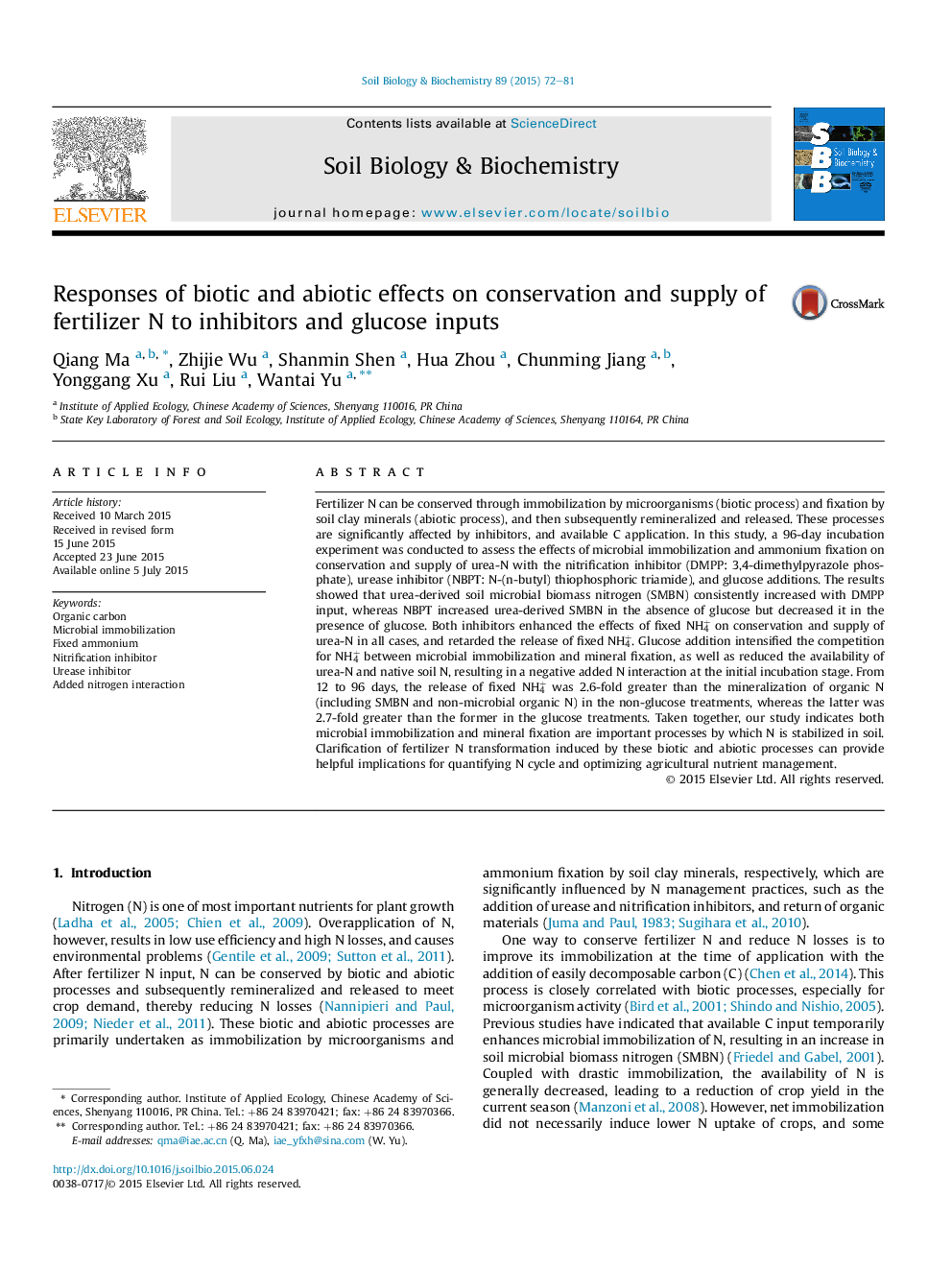| کد مقاله | کد نشریه | سال انتشار | مقاله انگلیسی | نسخه تمام متن |
|---|---|---|---|---|
| 2024456 | 1542595 | 2015 | 10 صفحه PDF | دانلود رایگان |

• We monitor the fate of urea-15N with the addition of DMPP, NBPT and glucose.
• Both inhibitors increased fixed NH4+ regardless of the presence of glucose.
• Inhibitors exhibit different effects on microbial immobilization with glucose addition.
• Glucose intensifies the competition for NH4+ between immobilization and fixation.
• Inhibitors and glucose addition alter microbial effects on fixed NH4+ release.
Fertilizer N can be conserved through immobilization by microorganisms (biotic process) and fixation by soil clay minerals (abiotic process), and then subsequently remineralized and released. These processes are significantly affected by inhibitors, and available C application. In this study, a 96-day incubation experiment was conducted to assess the effects of microbial immobilization and ammonium fixation on conservation and supply of urea-N with the nitrification inhibitor (DMPP: 3,4-dimethylpyrazole phosphate), urease inhibitor (NBPT: N-(n-butyl) thiophosphoric triamide), and glucose additions. The results showed that urea-derived soil microbial biomass nitrogen (SMBN) consistently increased with DMPP input, whereas NBPT increased urea-derived SMBN in the absence of glucose but decreased it in the presence of glucose. Both inhibitors enhanced the effects of fixed NH4+ on conservation and supply of urea-N in all cases, and retarded the release of fixed NH4+. Glucose addition intensified the competition for NH4+ between microbial immobilization and mineral fixation, as well as reduced the availability of urea-N and native soil N, resulting in a negative added N interaction at the initial incubation stage. From 12 to 96 days, the release of fixed NH4+ was 2.6-fold greater than the mineralization of organic N (including SMBN and non-microbial organic N) in the non-glucose treatments, whereas the latter was 2.7-fold greater than the former in the glucose treatments. Taken together, our study indicates both microbial immobilization and mineral fixation are important processes by which N is stabilized in soil. Clarification of fertilizer N transformation induced by these biotic and abiotic processes can provide helpful implications for quantifying N cycle and optimizing agricultural nutrient management.
Journal: Soil Biology and Biochemistry - Volume 89, October 2015, Pages 72–81